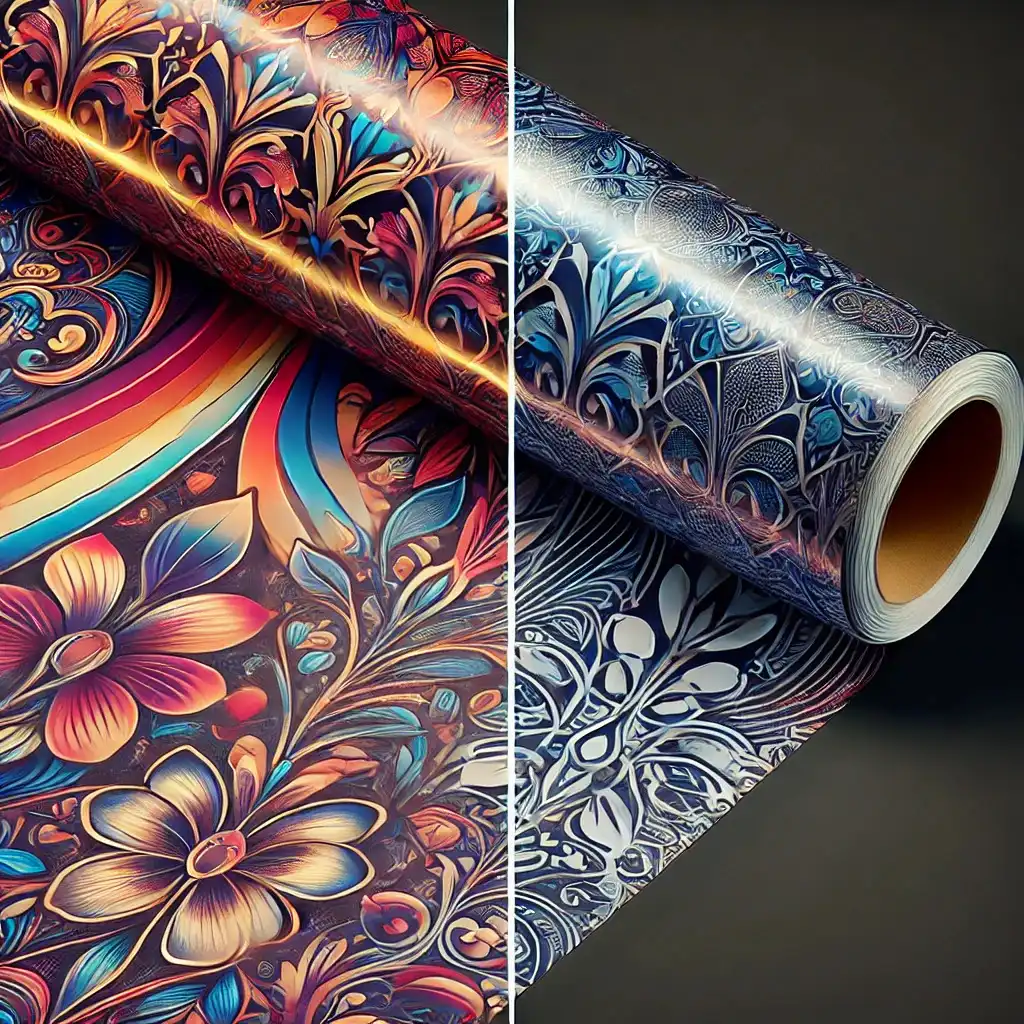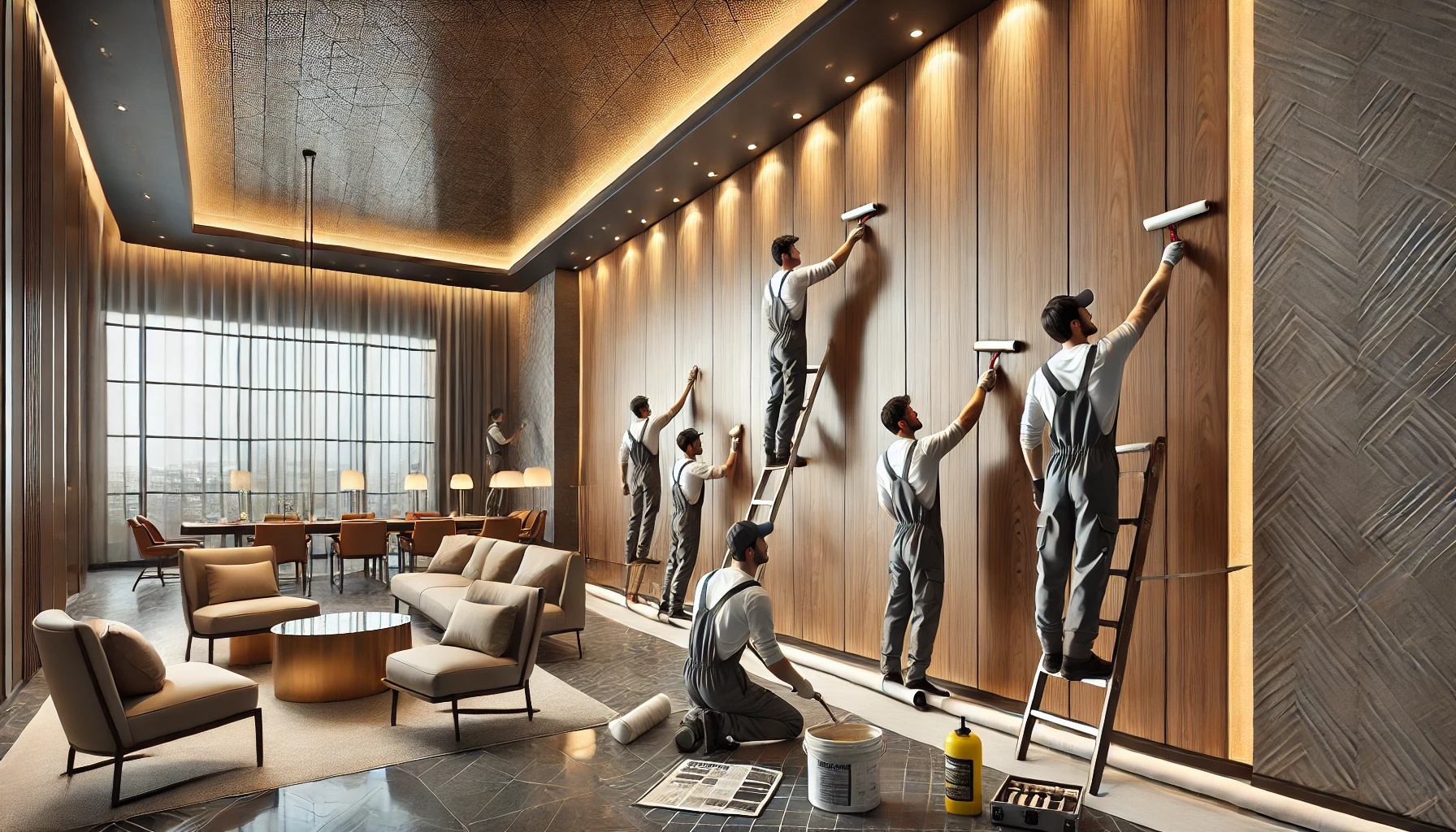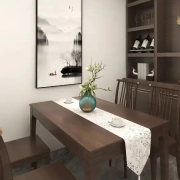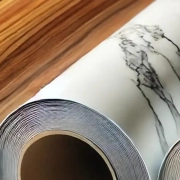What is Thermal Transfer PVC Film?
What is Thermal Transfer PVC Film?
Thermal transfer PVC foil is a material that transfers patterns or colors on the surface of PVC film through thermal transfer technology. Thermal transfer technology uses heat and pressure to transfer pre-designed patterns or colors from transfer paper or transfer film to the surface of PVC foil. This technology is often used in decorative materials that require fine patterns and rich colors.
The role of thermal transfer PVC film
Decorative role
- Thermal transfer technology is when the designer designs the pattern on a digital medium and then accurately transfers it to the PVC foil. This technology has great flexibility, which can make the pattern design more complex, rich, and easy to customize.
- The pattern of thermal transfer PVC film is richer because the thermal transfer technology used by thermal transfer PVC foil can achieve high-precision and high-detail pattern transfer on the surface of the film. This technology can use various colors and complex patterns in the transfer process, including gradient colors, small graphics, and multi-level designs.
- Ordinary PVC foil usually adds patterns through printing or embossing processes, which are limited in detail expression and diversity, and usually cannot achieve the richness and fineness of thermal transfer technology.
Customization
Thermal transfer technology makes the patterns of thermal transfer PVC films more diverse and beautiful. Therefore, thermal transfer PVC foils are usually more popular in the application of customized PVC films. Therefore, customization is usually the brand’s higher requirements for film pattern design, such as more complex patterns or high precision.
Improved durability
Thermal transfer PVC foils usually have higher durability in patterns and colors, especially after UV curing, their surface patterns can better resist ultraviolet radiation, wear, and chemical corrosion.
Surface smoothness and touch
The surface of thermal transfer PVC films usually has higher smoothness and better touch, which can imitate the texture of real materials, such as wood, leather, etc., to enhance user experience.
Environmental protection and sustainability
Some thermal transfer PVC foils use environmentally friendly inks and cleaner production processes, which reduce the emission of harmful substances and comply with increasingly stringent environmental regulations.
Ease of operation
Thermal transfer technology can complete pattern transfer more conveniently and quickly than the printing or embossing process of ordinary films, reducing subsequent processing steps and improving production efficiency.

Difference between thermal transfer PVC film and ordinary PVC film
Surface treatment
- Thermal transfer PVC film: After the transfer is completed, the thermal transfer PVC foil will be UV-cured. This gives the film surface a hard protective layer so that the pattern can better resist wear and tear in daily use. This coating has a high hardness and can effectively resist scratches and friction.
- Ordinary PVC film: Usually not UV cured, so the film’s wear resistance is not as good as thermal transfer PVC foil.
Production process
- Thermal transfer PVC film: In the thermal transfer process, ink designed for wear resistance is used, which can form a strong bond with the surface of the PVC foil after transfer, further improving the wear resistance.
- Ordinary PVC film: The pattern on the ordinary PVC foil may be formed by direct printing or embossing, and the surface has not undergone additional wear-resistant treatment, so it is easy to wear or fade in long-term use or frequent contact.
Application range
- Thermal transfer PVC film: Its pattern is more complex and beautiful, suitable for applications with strong decorativeness, such as high-end furniture surfaces, interior decoration, automotive interiors, electronic product housings, etc.
- Ordinary PVC film: It can be used in scenes with low visual requirements, such as building materials, wall coverings, floors, billboards, etc.
Applicable application scenarios of thermal transfer PVC film
Furniture manufacturing: The exquisite patterns of thermal transfer PVC film can be used for the decoration of furniture surfaces, such as imitation wood grain, imitation stone, and other high-end decorative effects, to enhance the beauty and texture of furniture surfaces.
Indoor decoration: Indoor walls, ceilings, and other surfaces that need to be decorated can add a unique and personalized style.
Automotive interior: Thermal transfer PVC film can enhance the grade of interior decoration by imitating wood grain and leather.
Gift packaging: Used for high-end gift packaging, providing exquisite appearance and touch, and increasing the added value of products.





